Finding even one trending keywords can be a game-changer for your brand’s SEO efforts.
The top spot of Google’s search results has an average click-through rate of nearly 40%.
The fourth result? A CTR of just above 7%.
That’s a wild difference, but it proves just how important it is to use SEO to get on the first page.
You may not have a very good chance at ranking for highly competitive search terms, but jumping on trending keywords gives you a chance to publish your content before the keyword has been covered by big-name sites.
With that, here are 5 ways to find trending keywords:
1. Use Google’s SEO Tools
One of the best ways to find trending keywords for SEO is to go directly to the source: Google.
The Basics
You can get a few ideas for keywords simply by looking at Google’s search bar.
Click the search bar and you’ll see a list of trending searches. Maybe they’re not all related to your industry, but it might spark some ideas.
Click the search bar and you’ll see a handful of trending Google searches.
Enter a topic in the search bar and Google’s autocomplete will pop up several related search queries. These search ideas are based on the most popular searches and on your location, but Google has said they’re also based on trending interest.
Important note: Your past searches also factor into this, so make sure you do it in an incognito window.

When you type a basic keyword, Google autocomplete produces other relevant keywords.
Another strategy is to look at Google’s “people also ask” section.
For this, you can get a bit more specific and enter a relevant keyword in the search bar. The results page produces a list of related long-tail keywords.
For this search, we used the keyword “ChatGPT alternatives”.
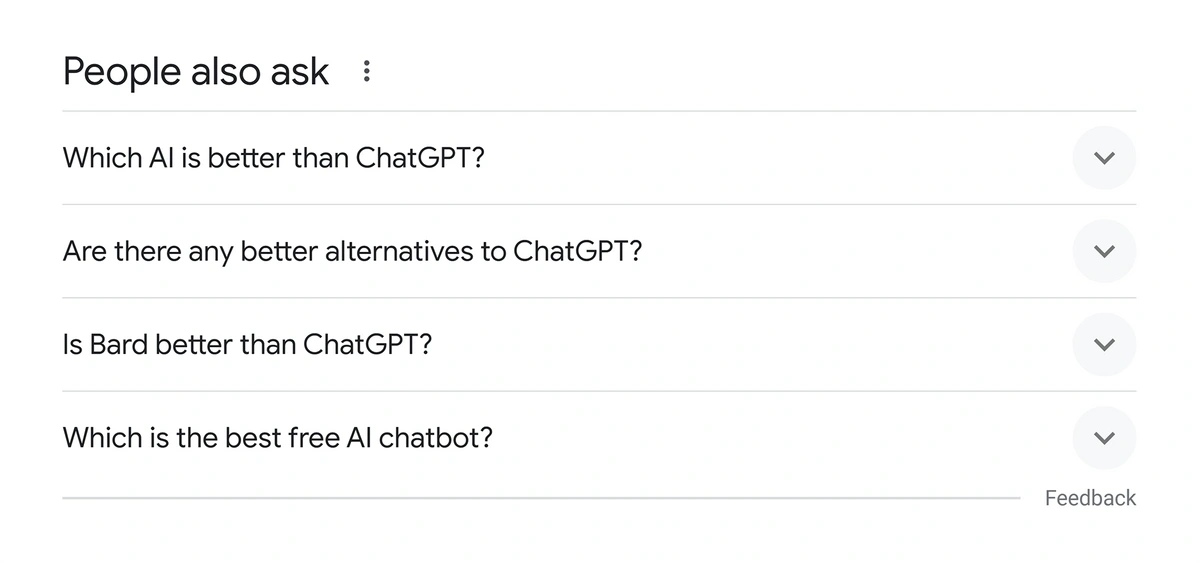
Google brought up related long-tail keywords related to the original search.
Click on any one of these options and Google will bring up more options.
Google Trends
Now it’s time to dig even deeper into Google with Google Trends.
This free tool shows search data for keywords.
The Google Trends dashboard can be adjusted by date range, which is incredibly helpful when you’re trying to identify an emerging trend. 100 is peak interest in the keyword; 50 represents half of peak interest. Essentially, you want to identify trends that are climbing up to 100 and avoid ones that are trending down.
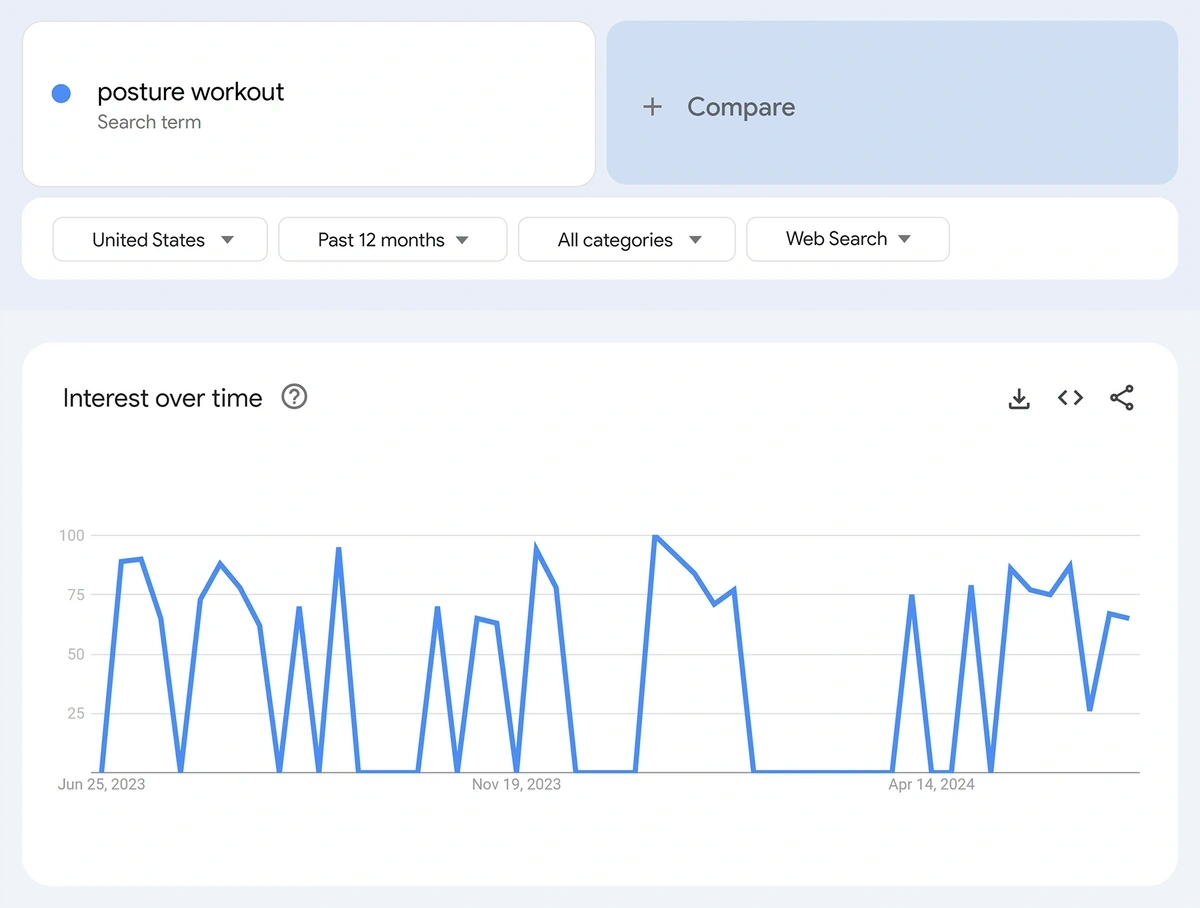
The Google Trends dashboard shows that “posture workout” has surged in popularity at certain points during the past year.
Another major advantage of using Google Trends is that it populates a list of what it calls “related queries.” These are keywords that are hyper-relevant to your main keyword.
And, you can use the drop-down menu to select top queries (the most popular) or rising queries (the keywords that have seen the biggest increase in volume recently).
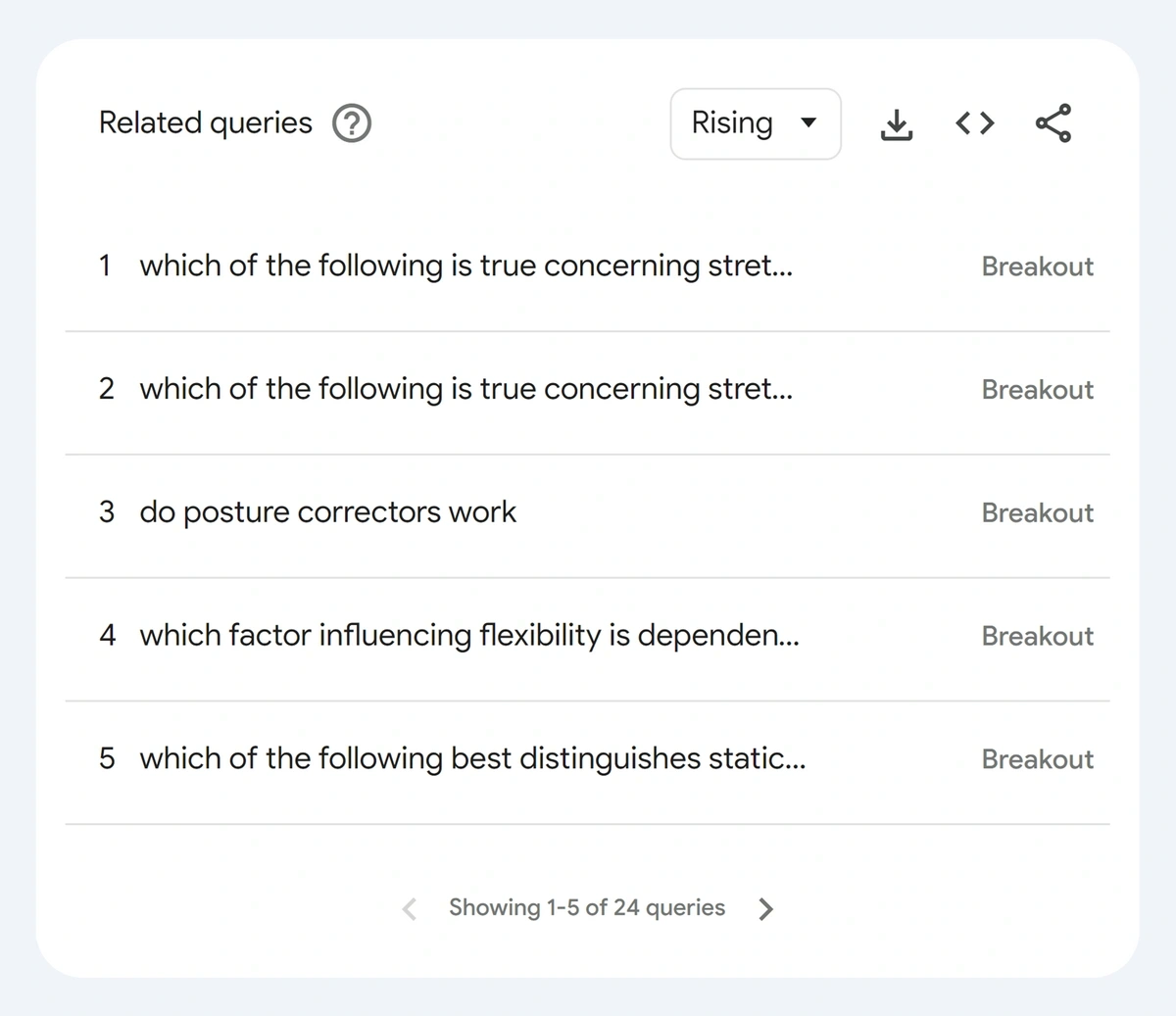
Look at the “related queries” terms in Google Trends and you could spot a hot trend.
Pay close attention to any keyword that’s listed as “breakout.”
This means the search term has recently grown by more than 5,000%. Often, these keywords don’t have a lot of competition—yet. That makes them ideal SEO keywords.
Google Keyword Planner
This is another valuable tool from Google, but you need to have a Google Ads account to access it. You don’t have to have an active campaign, though.
Inside the Keyword Planner, you’ll start with a few keywords related to your business.
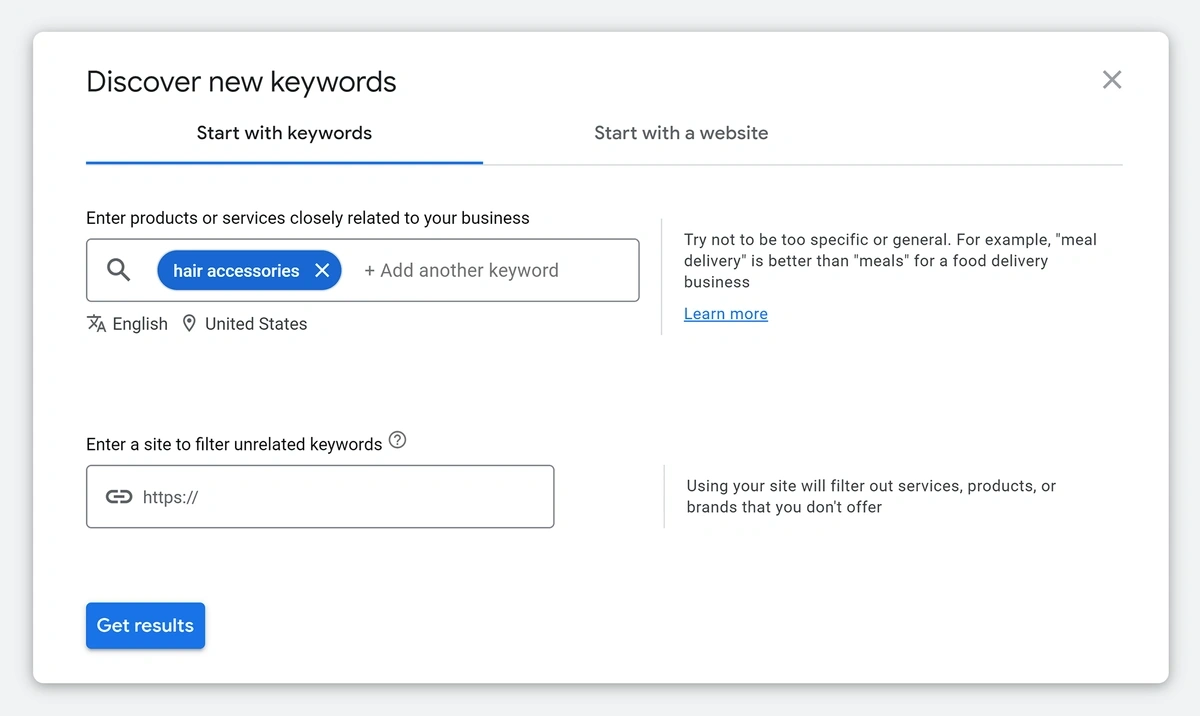
Enter one or more keywords that are related to your brand.
The dashboard will give you dozens of options for sorting and filtering the list of keywords recommended by Google.
One of the best features for finding trending keywords is the “change” columns—three-month change and YoY change. These can be helpful in identifying keywords that are on the rise.
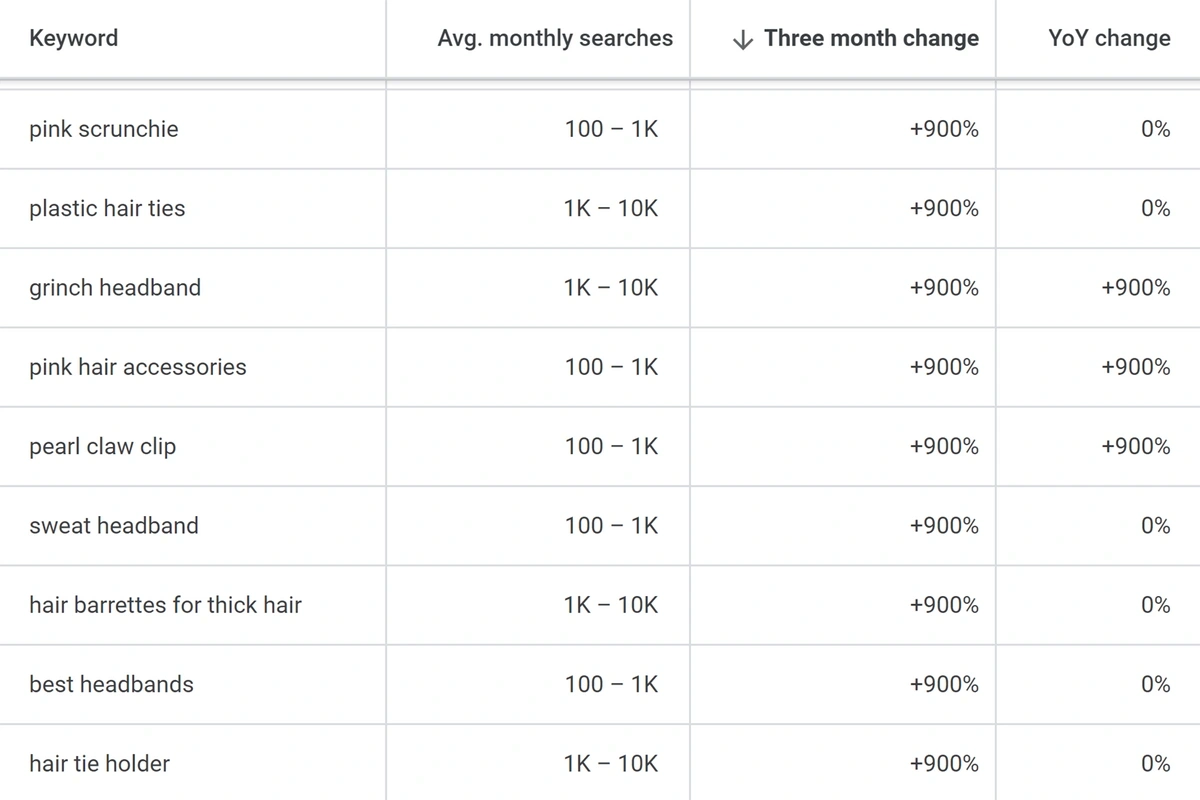
For this search in Google Keyword Planner, we were looking for emerging trends in the hair accessories market. Then we sorted the results by the “three month change” column to see which keywords are growing in popularity.
You can also sort the results by competition or volume to find a keyword that works for your brand.
2. Discover Keywords on Exploding Topics
The Trends Database from Exploding Topics has data on 1.1M possible keywords. A wide range of industries are included, everything from beauty to food to pets.
Exploding Topics identifies trends based on Google Search volume. The platform’s AI looks across the web to find out what’s trending and then actual humans go through a vetting process to make sure the trend is one that has real business value.
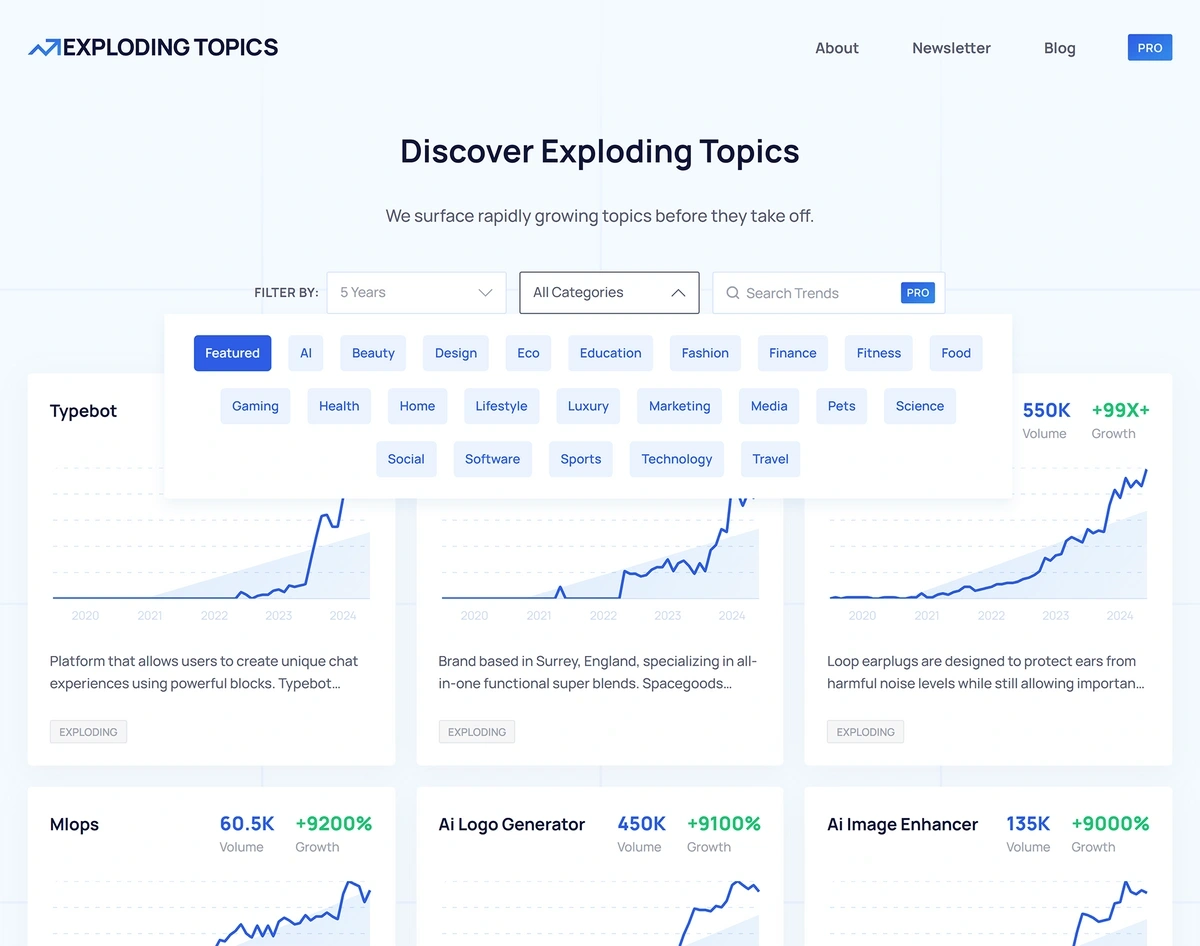
Exploding Topics segments trends into 25+ categories.
You can use Exploding Topics in two ways: to find new trending keywords or to verify if a keyword you have in mind is actually trending.
To find new keywords that are becoming popular with your audience, simply search the Trends Database by category.
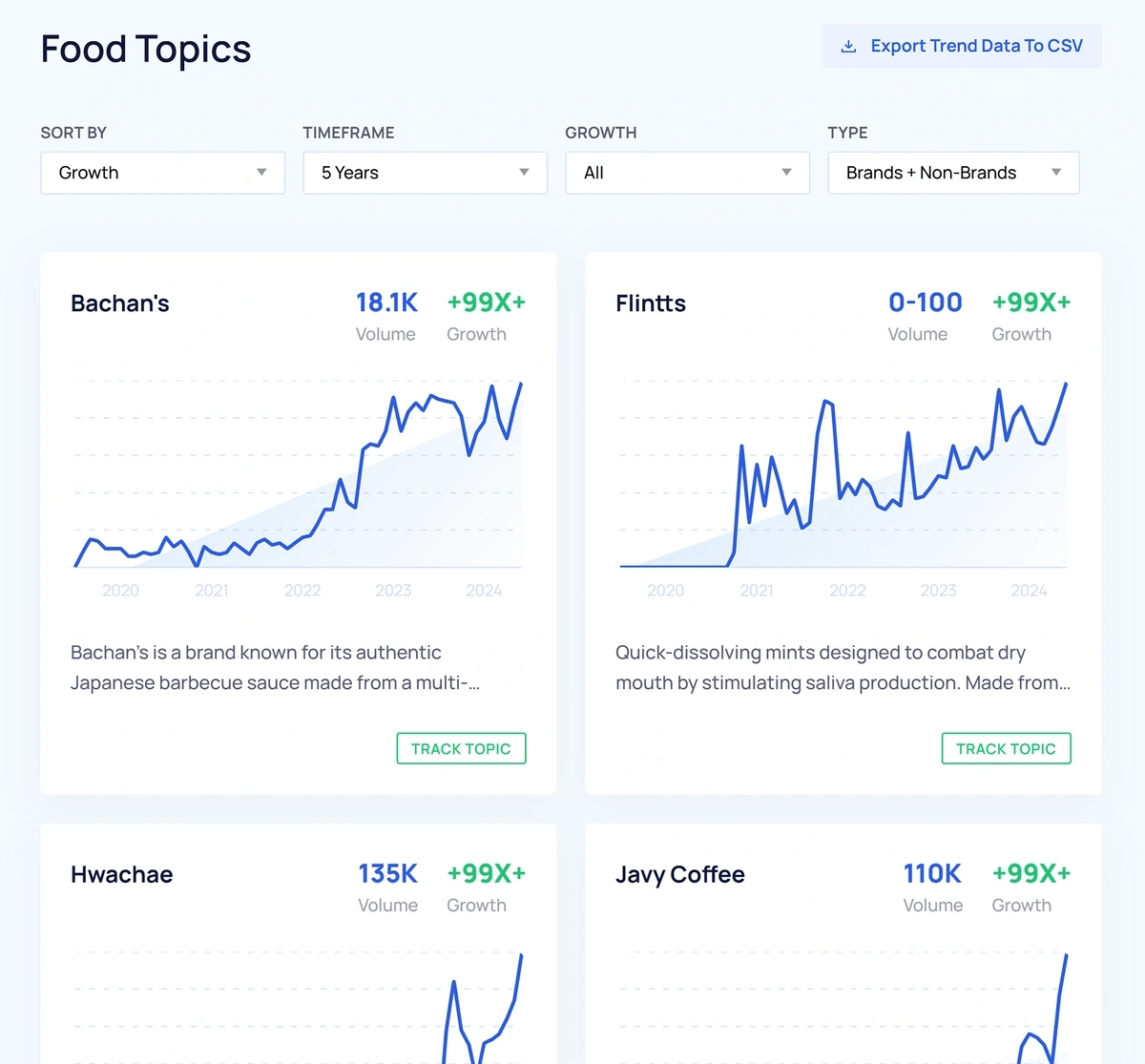
Exploding Topics lists several pages of trends from the food industry.
If you already have a keyword in mind, type it into the search bar and related trends will auto-populate (this search feature is only available as part of Exploding Topics Pro).
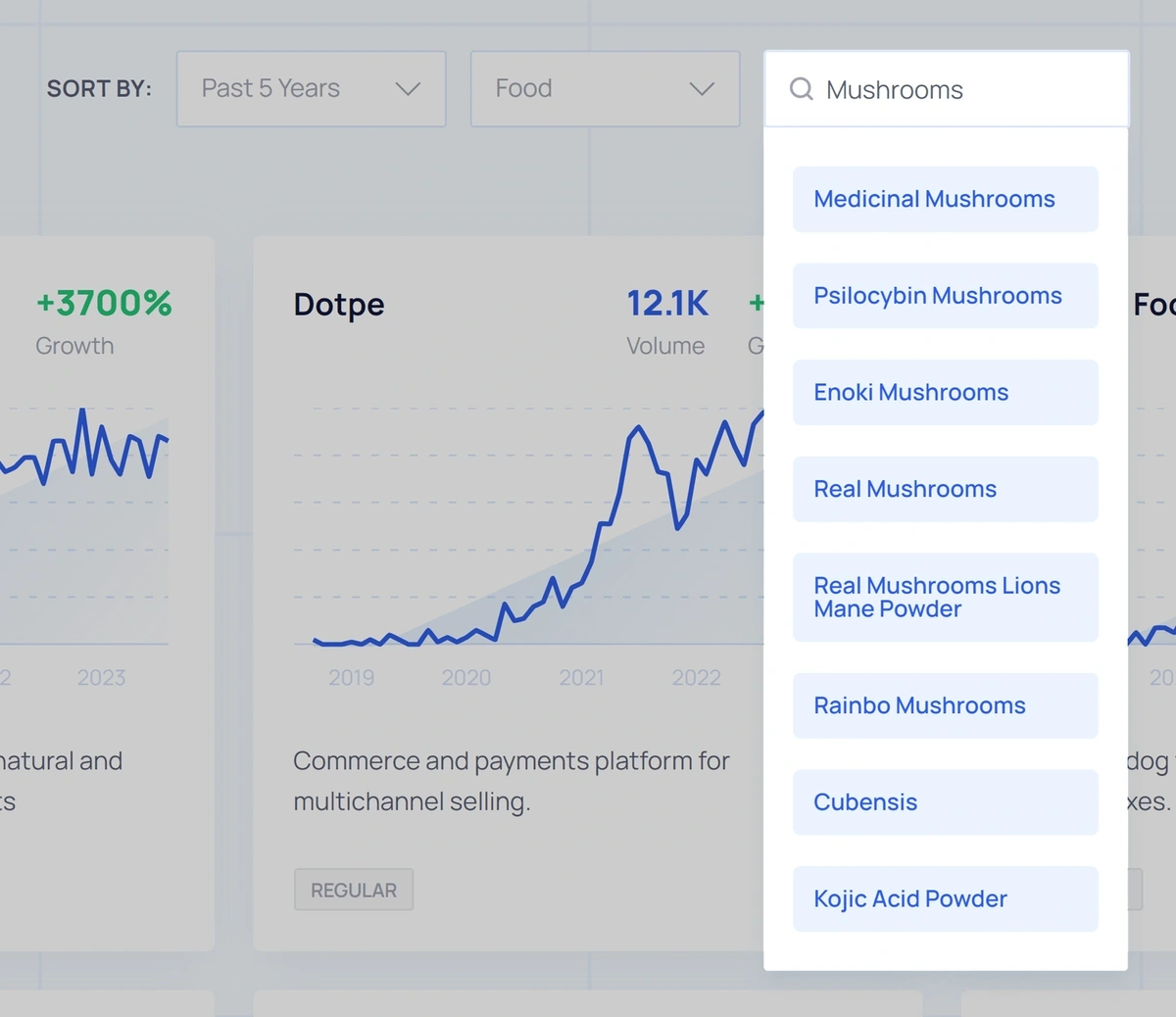
For example, if your food brand has products related to mushrooms, Exploding Topics will provide trend graphs for several keywords like Enoki mushrooms, Rainbo mushrooms, and more.
All of the data on Exploding Topics can be refined by date range. That way, you can see if it’s a real emerging trend or just a fad.
Exploding Topics has a track record of identifying major trends before they become major trends. This means that using the database could tip you off to trending keywords before your competition even knows about the trend.
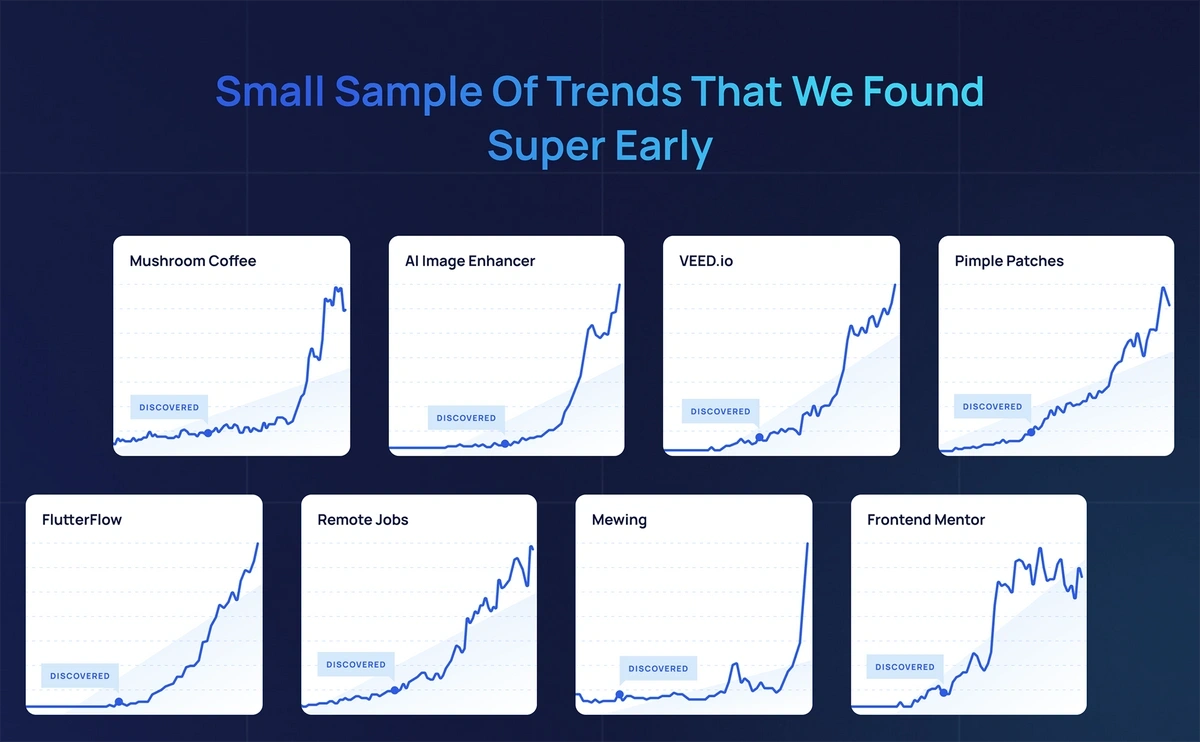
Exploding Topics found these under-the-radar trends before they emerged as mainstream topics.
3. Keep a Close Eye on Social Media
Countless trends have gotten their start on social media, so it makes sense to scour the platforms for trending keywords. Most often, the hashtags used on social media are very similar to the keywords your audience is searching on Google.
Most social platforms have an area of the app that lists trending topics or hashtags.
On X (Twitter) current trends are easy to find in the aptly named “Trending” section. On Pinterest, a few “Popular on Pinterest” topics will come up once you tap the search bar.
Instagram is a little less obvious. You’ll need to search for a term first and then look at the “tags” section to see which hashtags have the most posts.
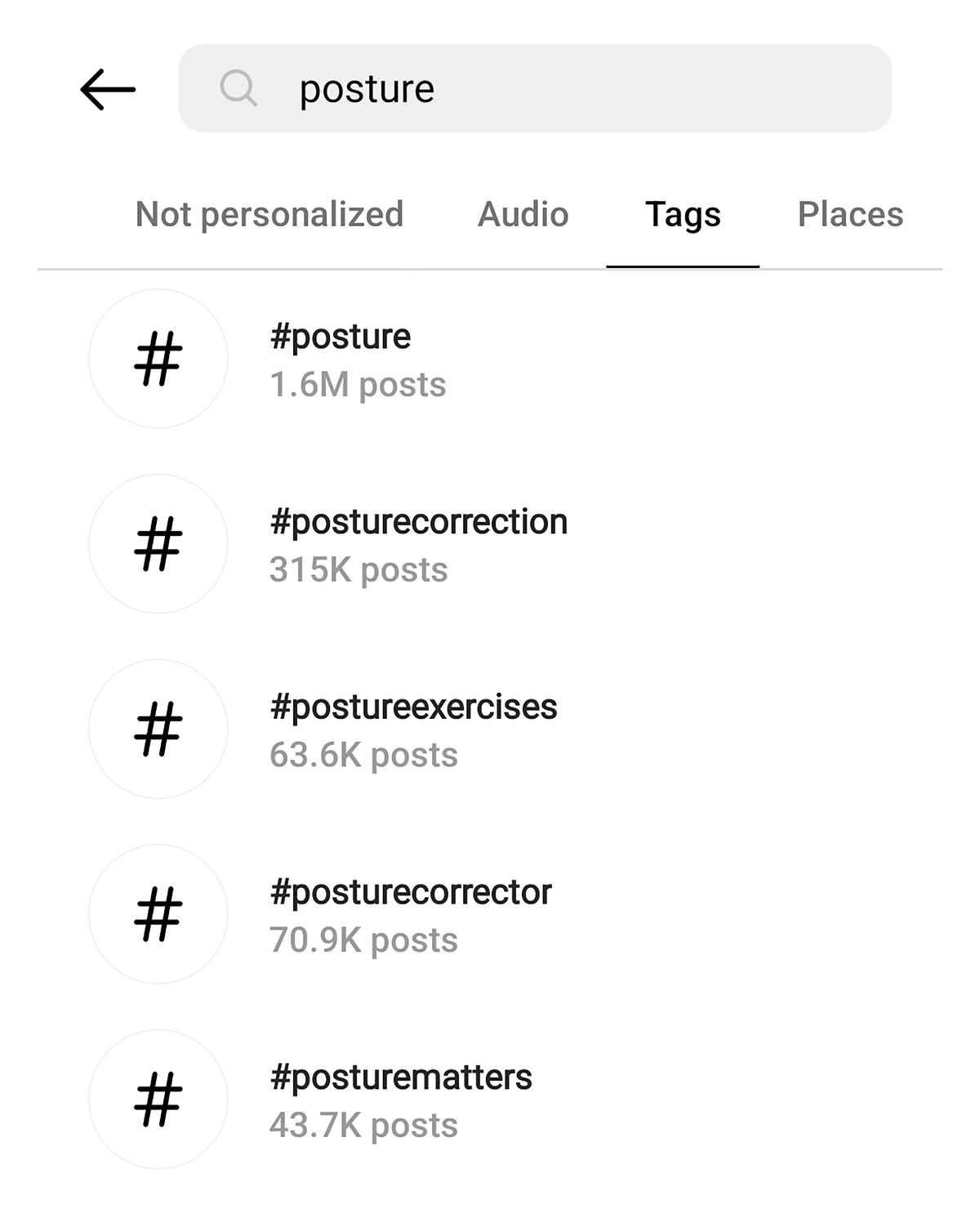
Hashtags related to “posture” can reveal trends that fitness brands may use for SEO.
TikTok has its own trend data posted in the Creative Center. (You’ll need a TikTok for Business account to access it.)
This is a comprehensive tool that lists trending hashtags and provides detailed analytics for each one.
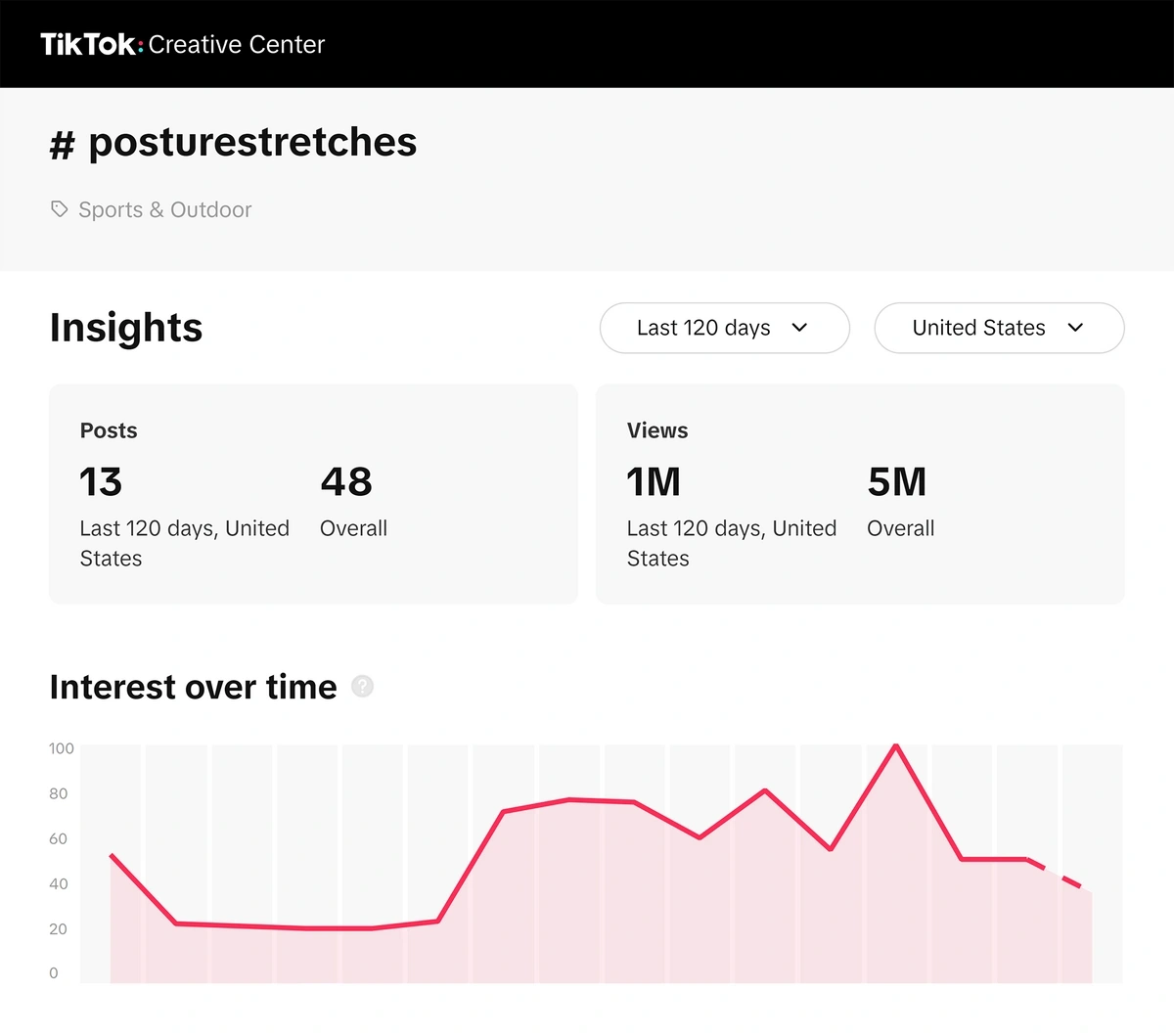
“Posture stretches” is a trend that emerged on TikTok in July 2023.
Much like Google Trends, you can see how the TikTok hashtag is trending over time and how much volume it’s seeing. If the interest is climbing toward 100, that means the keyword is moving toward peak popularity.
For any of these platforms, keep in mind that hashtags and trends with millions of hits already might not be your best SEO keywords.
Seeing such a sizable response means that your brand is not getting in at the start of the trend and the keyword difficulty may be too high for you to have a chance at ranking in the SERPs. That’s why it’s important to keep a close eye on these platforms, trying to catch trending keywords before they’ve blown up.
Once you’ve found trending keywords on social, you can fine-tune them for SEO.
For example, we’ve seen that “posture stretches” is trending on TikTok.
But to see the SEO potential of that search term, you’ll need to use a keyword tool (an easy-to-use free tool is Moz Keyword Explorer) to find the volume and difficulty, and research whether or not it’s a TikTok-only trend.
If there isn’t much volume, that doesn’t mean the keyword isn’t trending. You may be catching on to the keyword early—perfect timing! Trust your knowledge of your industry and do a search on Exploding Topics to see what kind of performance is predicted for the keyword.
Typing the term into Google Trends is another step that will give you an idea of related keywords that are trending. For example, by searching “posture stretches” on the platform, we can see that “simple stretches for better posture” is a breakout keyword. If the volume and difficulty fit your expectations, that could be the perfect trending keyword for your brand.
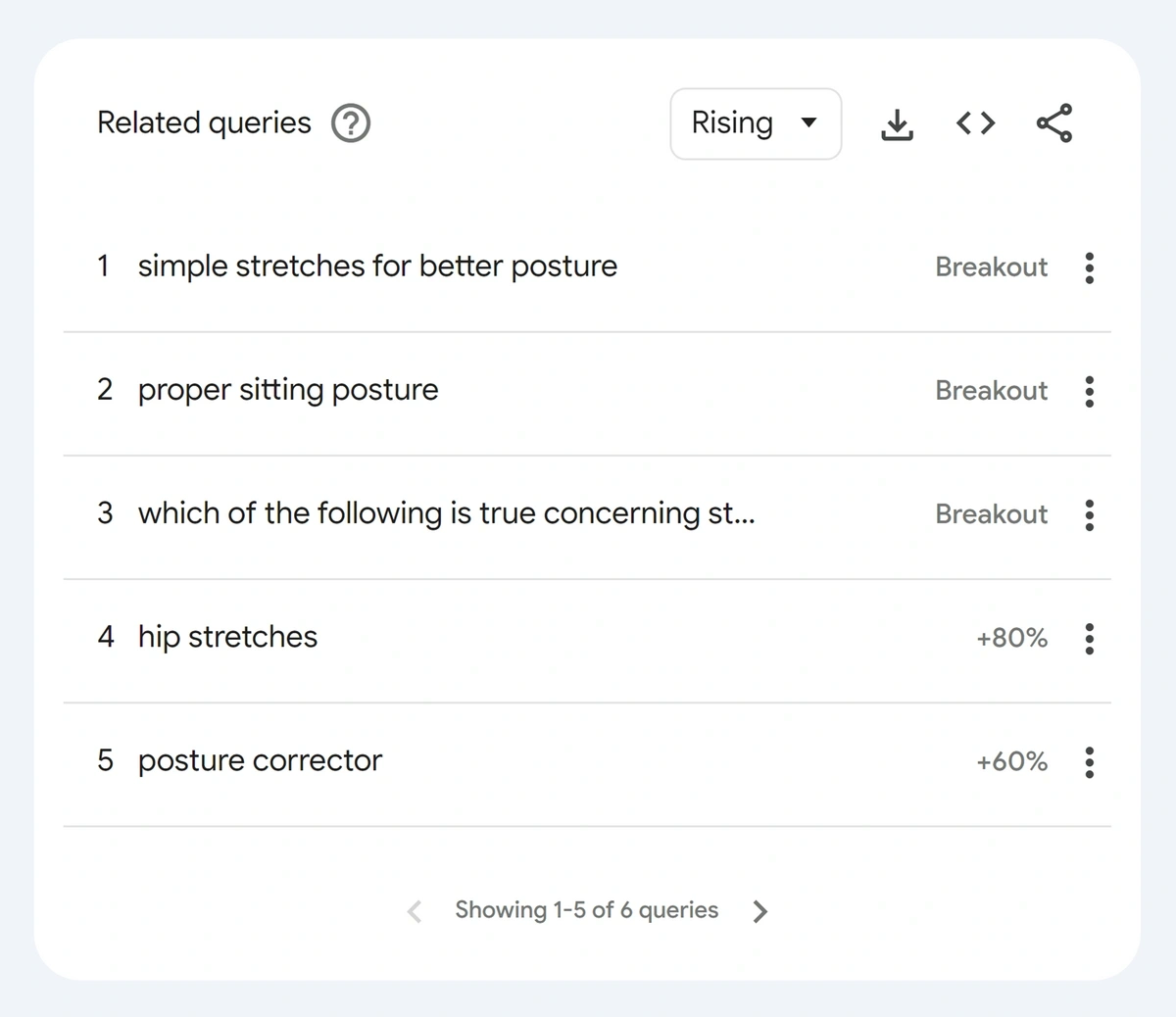
Once you’ve found a trending keyword on social media, check it in a keyword explorer and check Google Trends for breakout queries.
4. Listen to Your Audience on Reddit
If you can find out where your audience hangs out on Reddit, you’ll get a first-hand look at the conversations they’re having—and likely, those are the same topics they’re searching on Google.
These conversations are happening in real time, so it’s an excellent place to discover trending keywords.
For the best chance at finding a trend before it’s huge, be broad in the subreddits that you explore.
Take the skincare market, for example. Typing that into the search bar brings up multiple subreddits like “Sephora,” “skincareaddiction,” and “skincare_addiction”. You can scroll through any of these subreddits and look for keywords that keep coming up.
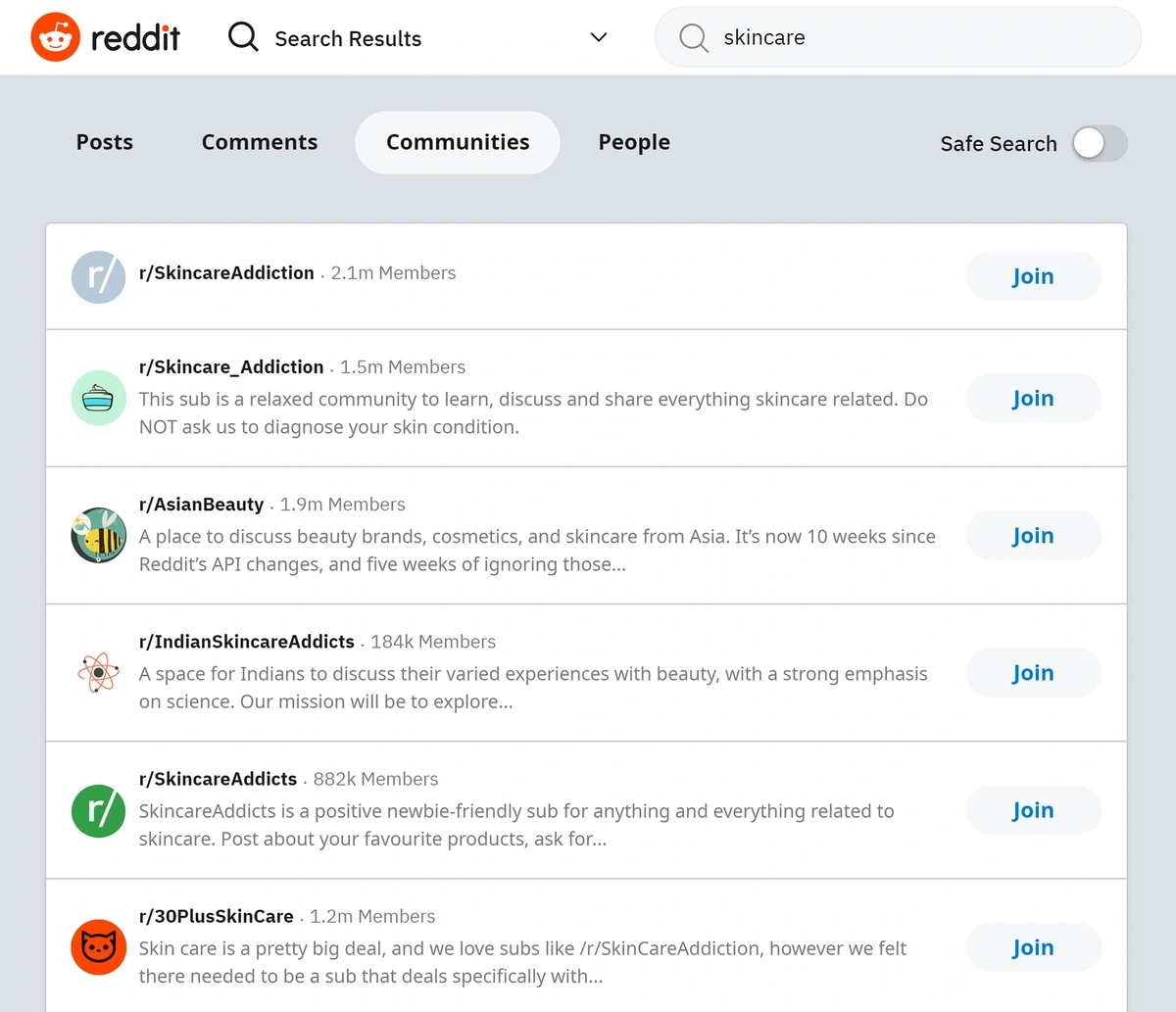
There are millions of members in skincare subreddits.
At the top of each subreddit, you’ll also see drop-down menus that let you sort the comments. Try sorting by “hot” or “top” or “rising” and adjusting the date range to see what could be a breakout trend.
When looking in the “makeupaddiction” subreddit, there are several popular posts in the past few months about bridal makeup and a few about natural or barefaced bridal makeup. If you’re in the skincare market, this would definitely be a trending keyword to research and use for SEO.

This makeup subreddit has several posts about natural makeup for weddings.
One keyword research tool that’s specifically focused on Reddit is Keyworddit. This is like a scaled-down version of Google Trends for Reddit.
Type in the name of a subreddit and you’ll see the most popular keywords and their search volume according to Grepwords.
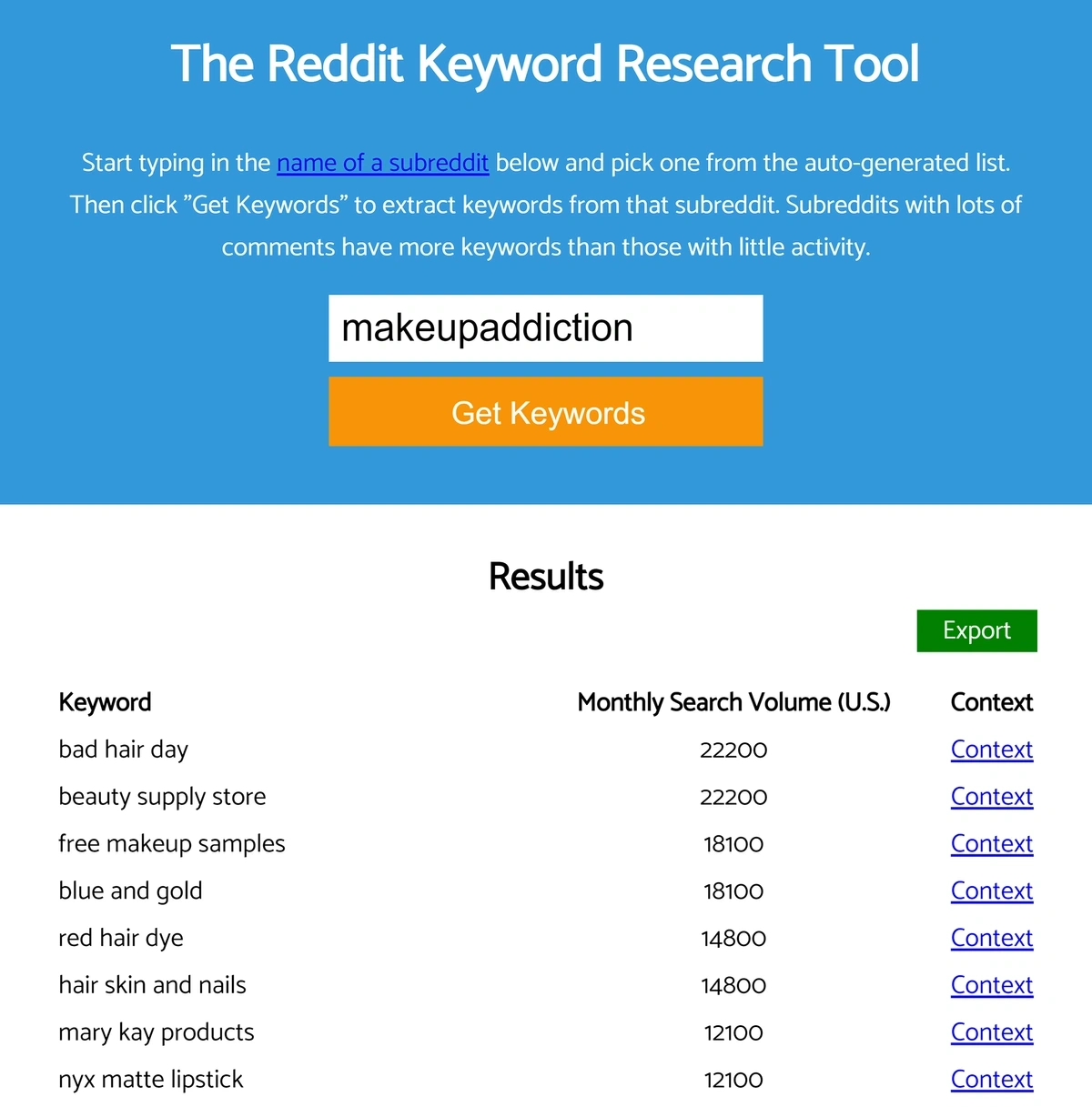
Keyworddit results for the “makeupaddiction” subreddit.
This tool doesn’t have much functionality other than producing keywords, but it can help with brainstorming and might provide a few keywords that weren’t originally on your radar.
5. Pay Attention to Industry News
News and pop culture drive a tremendous amount of Google searches. By keeping up-to-date on current events in your space, you can find newsworthy, trending keywords and adapt them for your brand.
Covid-19 is an obvious example from the not-so-distant past. That was a global event and every brand could identify with it in some way. Other global topics that might be of interest to your audience today are things like sustainability, inclusivity, AI, and mental health.
By consistently reading the news, you’ll be able to get a feel for how these trending topics impact your industry and the keywords you can pull out of them.
You probably have your favorite news site, but remember to look at the news from the same perspective as your audience. Reading articles from popular blogs, subscribing to industry publications, paying attention to the economy, and following social media influencers are all smart strategies.
There are plenty of tools available to make this an easy and efficient process.
For example, 2.8 million people subscribe to the 1440 daily newsletter. The newsletter is written with the goal that readers can go through the entire email in just five minutes. And, it’s fact-based content without bias or fluff.
You’ll get an overview of “need to know” topics, plus highlights from pop culture, tech, politics, and business.

Reading the 1440 newsletter is a quick way to digest the news of the day.
If your target audience is a Millennial or Gen Zer, subscribe to a newsletter like NPR’s Life Kit newsletter. It covers trending topics from the health, parenting, and lifestyle sectors with a young, friendly tone.
Life Kit is a podcast, too. So you might find trending keywords simply by scrolling through the podcast episode titles.
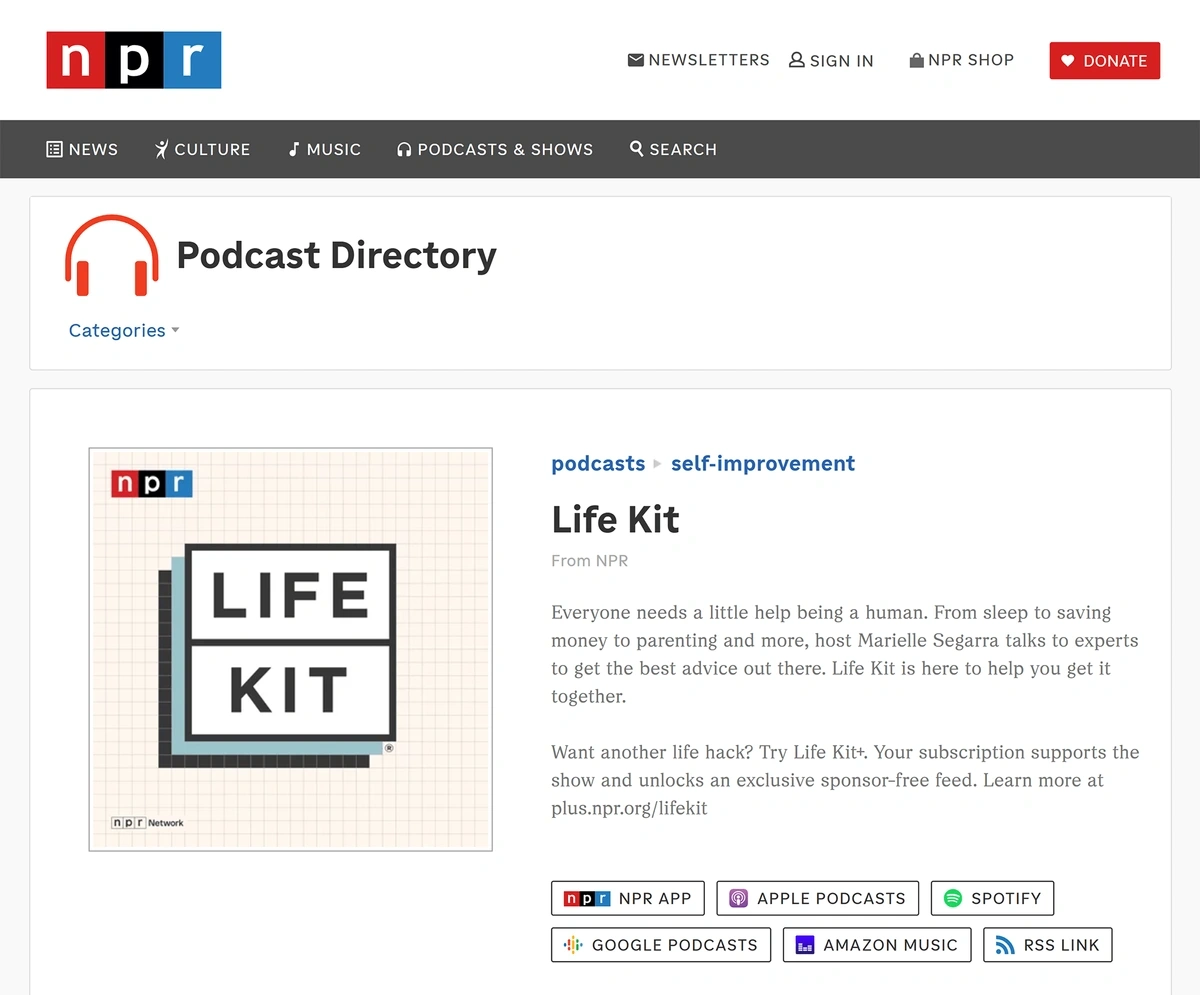
NPR’s Life Kit discusses lifestyle topics that Gen Zers and Millennials may be following.
Setting up Google Alerts is another extra step that’s well worth the effort.
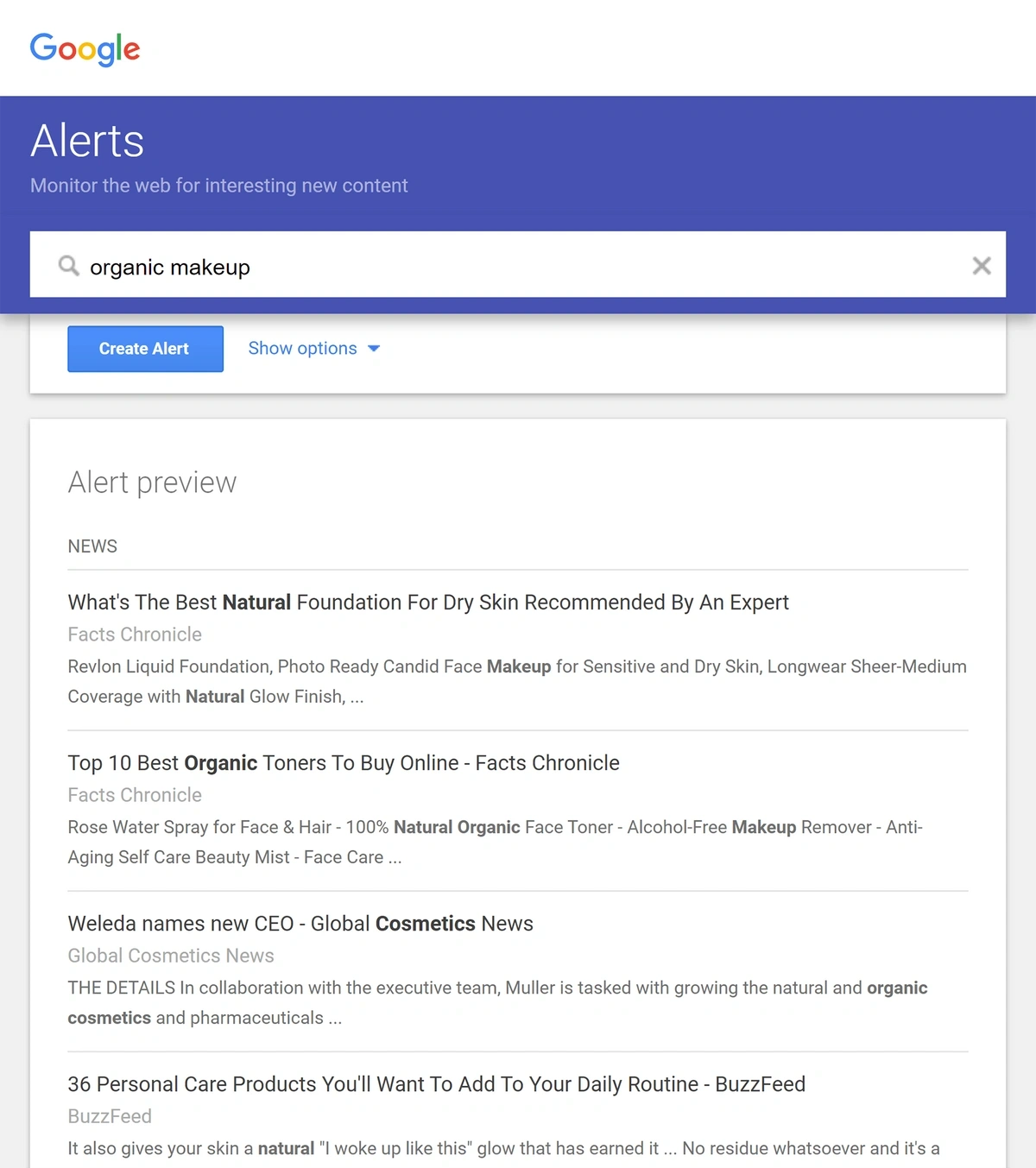
You can set up alerts to track any keywords that are relevant to your company and you’ll be automatically notified by email when the keyword appears in new content on Google.
When you identify a trending keyword in pop culture or in the news, run it through the strategies we’ve already listed to make sure it’s worth your time. Look to see if it’s starting to trend on social media or on Reddit.
Run it through Google Trends to catch any other breakout search terms and check Exploding Topics to see how the keyword has performed in the past few years.
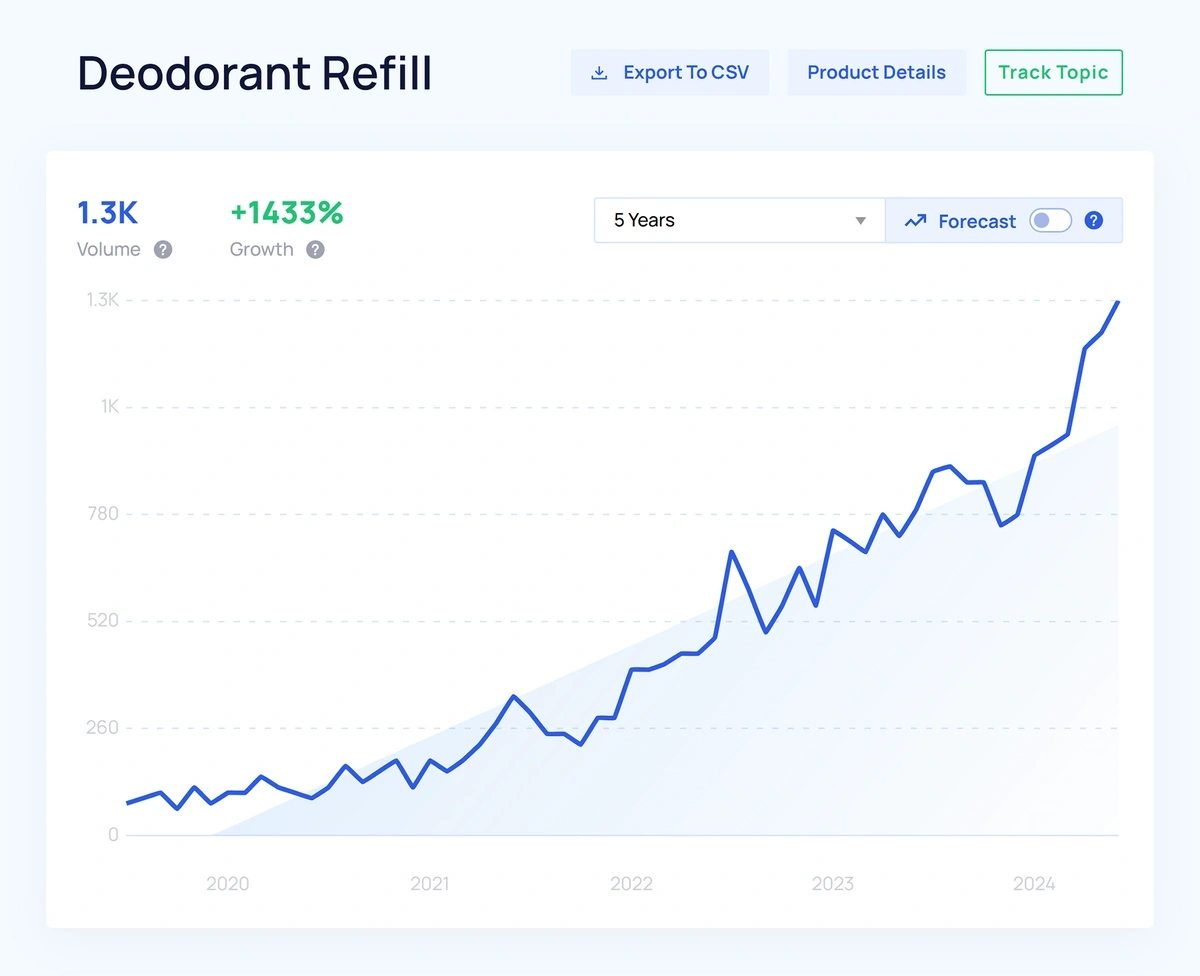
As seen in Exploding Topics, “deodorant refill” is a keyword that’s trending. This directly taps into the sustainability trends that are all over the news and current events right now.
Conclusion
Now that we’ve answered the question of how to find trending keywords for SEO, it’s time to pick your favorite approach.
A combination of sifting through real-time information and interpreting analytics is the best way to stay ahead when it comes to emerging keywords. And, Google Trends, Exploding Topics, and social platforms are the best tools for the job.
Incorporate these strategies into your keyword research process and you’ll increase your chances of seeing your brand on the first page of Google’s search results.




